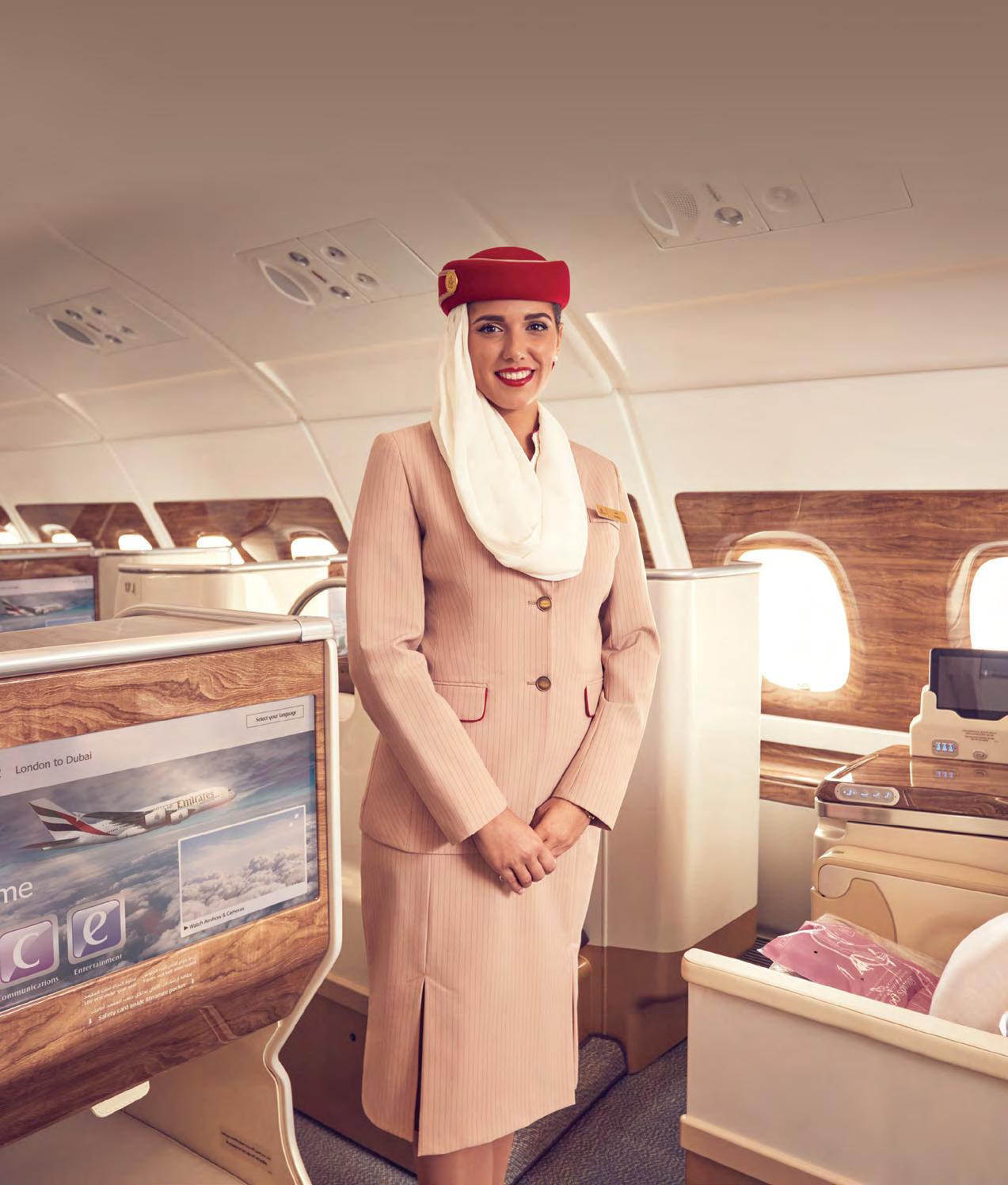RISE
DISCOVER HOW MEZZO-SOPRANO RAEHANN BRYCE-DAVIS FOUND HER TRUE VOICE
NOTE-WORTHY Community musicians strike a chord in Symphony in a Day

THE CALL TO ADVENTURE Strauss, Star Wars and the sounds of timeless storytelling


DISCOVER HOW MEZZO-SOPRANO RAEHANN BRYCE-DAVIS FOUND HER TRUE VOICE
NOTE-WORTHY Community musicians strike a chord in Symphony in a Day

THE CALL TO ADVENTURE Strauss, Star Wars and the sounds of timeless storytelling

Go out with new friends to one of our dining rooms, or have a big night out on the town. Then spend the next morning in your luxurious Ryman apartment, knowing it’s nothing but you and 1000 thread count cotton for as long as you like.
Drop in to rymanhealthcare.com.au

16 The Divine Miss R Ahead of her Melbourne Symphony Orchestra debut, mezzo-soprano Raehann Bryce-Davis shares what having a voice in the industry means to her
22 The Hero’s Journey
This year’s program is inspired by an age-old narrative archetype that underpins most stories
26 Chorus Line
Behold the MSO Chorus – a tapestry of volunteers from all walks of life with one thing in common
32 Notes To Heart Trumpet soloist Tine
Thing Helseth reflects on changing perspectives and priorities
38 Big Day Out
See how community musicians live out their dreams once a year performing with the MSO
42 Inspiring Young Minds
Discover a famous tale of grit and courage adapted for orchestra and young listeners
46 Essay: The Journey of the Antihero Australian author Sofie Laguna ponders on her deep fascination with the antihero ahead of the MSO’s 2024 program theme of Great Stories







Elissa Blake is an arts journalist who began her career at The Age after completing a BA in Professional Writing and Literature at Deakin University. She was the editor of Rolling Stone in the mid-1990s and worked as a leading arts journalist at The Sydney Morning Herald for more than a decade. She now writes arts stories for The Guardian Australia and works with the University of Sydney as a media adviser. Elissa interviewed Lady Southey AC for Portrait of a Patron (page 12) and wrote the feature Chorus Line (page 26).

Melbourne-born photographer James Geer began his career as a graphic designer but transitoned over to photography in 1999. Since then, James has worked in New York and been commissioned by ad agencies, entertainment companies and corporates around the world. Noted for his portraiture, he has photographed influential Australians for publications such as Monocle, Gourmet Traveller and Vogue Living. His real passion is documenting Australian lifestyle and producing some of the finest representations of our unique culture. James took the portraits of the MSO Chorus on page 26.
Melbourne-based photographer Daniel Mahon swapped a corporate career for photography. He left Melbourne for New York, where he worked with leading fashion and portrait photographers. Since returning to Melbourne, Daniel’s work has appeared in publications such as Wallpaper, The Age (Melbourne) magazine, Gourmet Traveller and Frankie In this issue of Encore, Daniel captured MSO patron Lady Marigold Southey AC on page 12 and MSO cellist Michelle Wood on page 50.
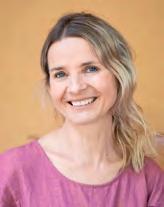
Sofie Laguna originally studied to be a lawyer, but after deciding law was not for her, she trained as an actor. Sofie began her writing career as an author for children and has written over 20 books for young people. Her many books for young people have been published in the US, the UK and in translation throughout Europe and Asia. She has been shortlisted for the Queensland Premier’s Award, and twice been awarded Honour Book by the Children’s Book Council of Australia. Sofie’s second novel for adults, The Eye of the Sheep won the 2015 Miles Franklin Award. Sofie has recently released a number of books for children, including the novels, The Song of Lewis Carmichael, and The Glow. You can read about Sofie’s intrigue and fascination with the concept of the antihero on page 46.

Kim Thomson is a writer based in Naarm/Melbourne. She has written on everything from music to the space industry for publications including The Australian and The Saturday Paper. She was also the founding editor of Swampland, an independent music magazine. You will find Kim’s words on page 42, where she spoke with Australian composer and MSO 2024 Composer in Residence, Katy Abbott.
Stephanie Bunbury has been a journalist for 40 years, starting at The Age after studying visual arts and politics at Monash University and eventually becoming arts editor. She now lives in London, where she writes for The Age and The Sydney Morning Herald, and also covers European film festivals. Last year, the San Sebastian festival honoured her with its annual award of thanks to an international journalist for bringing recognition to culture in the Basque region. Stephanie wrote the cover story on mezzo-sporano Raehann Bryce-Davis on page 16.


The year 2023 finished with a flurry of activity, and 2024 has kicked off with a bang; I am so pleased to welcome you to our fifth edition of Encore magazine.
Our cover artist is American mezzosoprano Raehann Bryce-Davis, who will not only perform in Mahler’s Third Symphony, but also lead a vocal masterclass as part of our Music & Ideas program. I invite you to join us at this intimate event.
Another leading lady who will join the MSO this year is trumpeter Tine Thing Helseth. It is not only exciting to showcase a trumpet concerto in our season, but we are excited to welcome one of the most exciting talents to Melbourne. Ahead of her visit in May, enjoy discovering more about this young, budding star.
In line with our 2024 ‘Great Stories’ programming theme, we take a look at some of the greatest heroes in literature and film, as well as spend some time with the MSO Chorus and highlight the history of our Symphony in a Day program.
With our Chinese New Year concert celebrating 11 years this year, did you know the MSO has a rich history of relations with Asia? We step back 30 years ago to 1994, when the Orchestra visited Japan under our Conductor Laureate, Hiroyuki Iwaki.
I hope you enjoy the first edition of Encore for 2024.
Sophie Galaise, Managing Director, MSOThe MSO respectfully acknowledges the people of the Eastern Kulin Nations as the Traditional Custodians of the unceded land on which we work. We acknowledge Elders past, present and emerging and honour the world’s oldest continuing music practice.
We are proud to collaborate with The Torch to showcase this beautiful artwork in our magazine to accompany our Acknowledgement of Country. The Torch is a not-forprofit organisation that provides art, cultural and arts industry support to Indigenous offenders and ex-offenders in Victoria. This work, called Bunjil Dreaming, was created by Taungurung/Boon Wurrung woman Stacey, who says of the work: “Bunjil is the Creator. This is a spirit that physically takes the form of a wedge-tailed eagle and is a star in the sky at night.” Stacey has traditional connections to the Melbourne region. In 2013, she started working at the Koorie Heritage Trust where she met an Elder who helped her with her family connections. “The Elder told me that I am Taungurung/Boon Wurrung. Since that day, I don’t paint dots anymore. My inspiration is the beautiful designs and patterns from traditional artefacts of my ancestors. Painting diamonds is healing for me.”
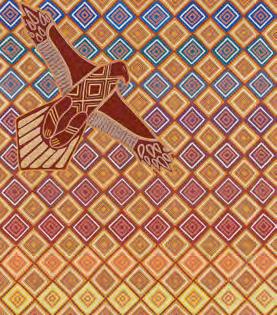
Stacey (Taungurung/Boon Wurrung), “Bunjil Dreaming” 2020, acrylic on canvas

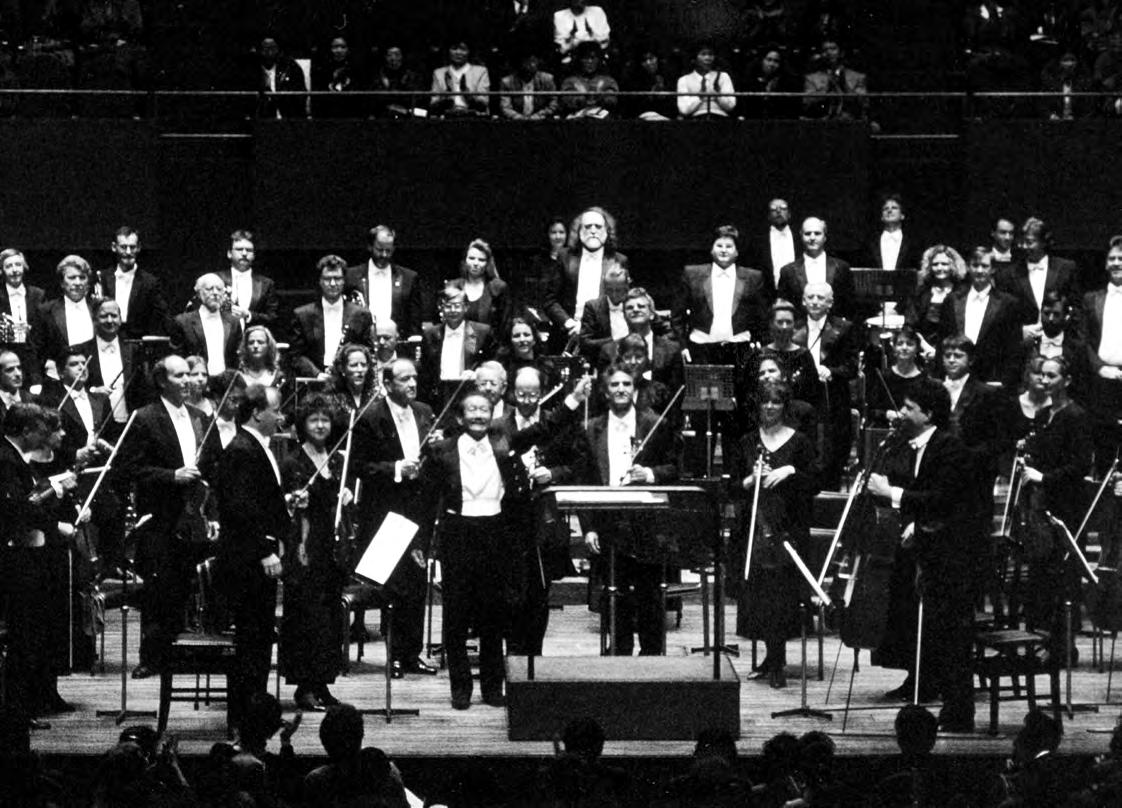
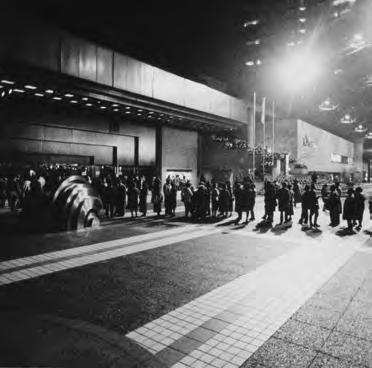
Taking the MSO to his Japanese homeland had long been the dream of then-Chief Conductor Hiroyuki Iwaki. That dream was first realised in 1987 with a tour to Japan and South Korea, brought to life via financial assistance from Iwaki’s golf club and his own hip pocket. But it was in November 1994 when Iwaki, returning to conduct the MSO for his 21st season, helmed a second tour that would make an even bigger mark. With a program featuring a captivating mix of pieces by Japanese composer Tōru Takemitsu and Australian composer Barry Conyngham, the tour captured audiences across Osaka and Tokyo like never before – indeed, The Cities from Conyngham’s Vast IV and two Takemitsu pieces were heard by Japanese audience for the first time.
“I will never forget the overwhelming excitement in the audience as the concert reached its conclusion,” said former MSO Society President, the late Patricia Begg, reflecting on the occasion. “We had a lovely experience with the ladies in front of us. As we stood to leave, they realised that we were not Japanese. We managed to communicate, without language, that we were from Melbourne and that it was our Orchestra. They bowed and we all started crying; the common understanding of a wonderful concert was great.”










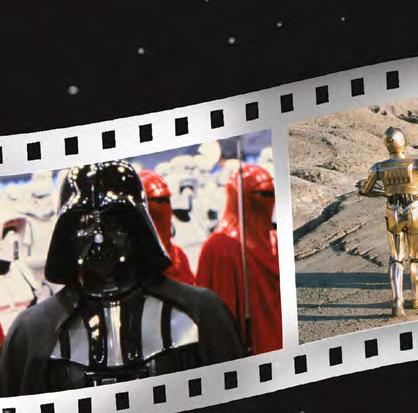








Our Associate Principal Clarinet dreams about living in Berlin and wishes he could play the violin as he takes on the Proust Questionnaire.
Which living person do you most admire?
Lionel Messi. His ability to make great choices in every situation, to be a true team player, to do spontaneous, incredible things in every game and all this whilst remaining humble and balanced.
What is your current state of mind?
Victoria.
What do you consider the most overrated virtue?
So-called positivity. A lot of my favourite music rests on the contrast and intertwining of major and minor keys.
Imagine if music was in only major tonality?
What is the quality you most like in a person?
Awareness.
Which words or phrases do you most overuse?
“When I lived in KL…”
What or who is the greatest love of your life?
Swimming at a good beach.
Which talent would you most like to have?
Just having any would be great.
If you could change one thing about yourself, what would it be?
My first touch in football is sometimes a bit wayward. I can work at it but I’d love it to be better more easily.
What do you consider your greatest achievement?
One night I played Brahms’ F Minor Sonata downstairs at the Sydney Opera House for 2MBS FM’s Radio Gala live broadcast, then rushed upstairs to play Weber’s Second Concerto with the Sydney Symphony. Quite a night!
Where would you most like to live?
I’d love to live in Berlin – there’s so much great music going on there, so much interesting and genuine artistic expression, so many people who like to sit and talk about things. Not too many tall, dehumanising buildings.
What is your most treasured possession?
I love having a football with me at every possible moment.
What is your most marked characteristic?
Sometimes I can listen very well.
What do you most value in your friends?
My friends have the capacity to switch modes with me, to imagine crazy things and see things from many perspectives.
What other instrument do you wish you could play?
The violin has such a big range of expression, so versatile. And, you know, quartet music is incredible.

What do you consider the most overrated virtue? So-called positivity. A lot of my favourite music rests on the contrast and intertwining of major and minor keys. Imagine if music was in only major tonality?
Who are your heroes in real life?
My mum brought me and my sister up by herself, worked hard to help us be in line and prepared for any opportunities; and at the same time was a really caring, fiery and inspirational music teacher to her students at school.
What is it that you most dislike?
Boring performances of the music I love. I get an itch all over, can’t sit still and want to scream when performers play without all the essential things.
How would you like to die?
Fighting to awaken Australians to the marvels of classical music. What is your motto?
Anyone who isn’t confused clearly doesn’t understand the situation.

MSO patron Lady Marigold Southey AC shares how her father Sidney Myer instilled a love of music, generosity and giving over generations.
Photography DANIEL MAHON“All my children say I’m not a normal 95-year-old,” says Lady Marigold Southey AC. “I’m a very busy woman. I’m not sitting around knitting, I have so many interests, from farming and wineries to philanthropy. I’m also becoming a lunch girl! I like having lunch with friends and then staying home at night with my two dogs.”
The fourth child of the late Sidney Myer and Dame Merlyn Myer, Marigold Merlyn Baillieu Southey – a philanthropist in her own right, and a former Lieutenant-Governor of Victoria – has been a lifelong supporter of the Melbourne Symphony Orchestra, inspired by her father’s legacy. Myer was President of the MSO in the 1920s, during which time he gave Melbourne one of his greatest gifts - the annual Sidney Myer Free Concerts. Those MSO concerts, which have now been running for 93 years, are a special part of Melbourne’s culture, Lady Southey says. “The concerts are so important for the people of Melbourne. My father insisted they be free for everyone, and he was adamant they should be outdoors. For some people, it is their first ever concert.”
“And I think it’s wonderful to be sitting out there on a beautiful night. It starts off at sunset and ends up in the pitch dark and that transition is so exciting.”
Lady Southey also attends the MSO concert hall season during the year. She has a passion for the dramatic works by Tchaikovsky, Rachmaninov, Mozart, Puccini, and Vivaldi, to name a few. “I love the choral music, too. I love Handel’s Messiah and St John Passion . I’ve seen wonderful choral nights in Hamer Hall.”
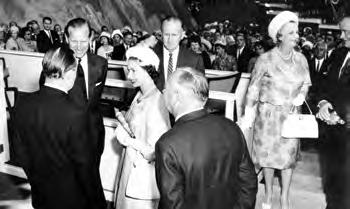
After Myer died in 1934, one-tenth of his estate went to establish the Sidney Myer Fund, a philanthropic organisation that was highly instrumental in the building of what would become the Sidney Myer Music Bowl in Kings Domain. “My father passed away when I was six, so I don’t remember those early concerts,” says Lady Southey. “But my mother started taking me to the MSO around the age of eight at the Melbourne Town Hall.”
Lady Southey says some of her proudest moments are spent sitting under the stars at the Sidney Myer Music Bowl. “The atmosphere is incredible,” she says. “When the soloists are playing, you can hear a pin drop, even though there are 10,000 people sitting there.
She recalls life with her first husband, Ross Shelmerdine, whom she married in 1950, was very busy. She raised four children and helped start several businesses including the Mitchelton winery in Nagambie, designed by renowned architect Robin Boyd. “I’m so proud of that winery,” she says. “It was the best thing we did together. It was built around the same time as Rosemount in NSW, we could see what was happening in the wine industry and we were both 10 years ahead of our time.” Shelmerdine died in 1979, and in 1982 Lady Marigold Southey married Sir Robert Southey, then Chairman of the Australian Ballet. She became immersed in ballet, classical music, and opera.
“Everything changed in my life when I married Bob, my life became all about arts and culture, all the lovely things,” she says. “It was absolutely wonderful.”
No less immersed in the arts four decades later (Sir Robert passed away in 1998), Lady Southey is guided by her father’s legacy of generous gifting, one that she’s certain will continue in years to come. “All I know is the tradition of giving will keep running in the family,” she says with a smile. ■
“The concerts are so important for the people of Melbourne. My father insisted they be free for everyone, and he was adamant they should be outdoors.”
Highlights of what’s coming up in the first half of 2024.

What a way to kick off a season! Holst’s
The Planets has been a favourite of the MSO for generations, and Jaime Martín and the Orchestra are so excited to be performing it as part of the Ryman Healthcare Season Opening Gala.
Martín has paired Holst’s masterwork with another British piece of the same period, Elgar’s Cello Concerto. German cellist Alban Gerhardt makes his longawaited return to the MSO stage to perform arguably the most popular concerto for cello ever written.
Ryman Healthcare Season Opening Gala: Jaime Conducts The Planets, Thursday 21 and Saturday 23 March, 7.30pm, Hamer Hall, Arts Centre Melbourne, proudly presented by Ryman Healthcare.
Alban Gerhardt and the MSO also perform as part of MSO Morning: Elgar’s Cello Concerto, Friday 22 March, 11am, Arts Centre Melbourne.
Romeo and Juliet, Tchaikovsky and Prokofiev. One story, two incredible musical interpretations. In July, Jaime Martín will lead the MSO through Tchaikovsky’s Romeo and Juliet Fantasy Overture as well as Martín’s own Suite from Prokofiev’s Romeo and Juliet. Also on the program is Paganini’s wonderfully difficult Violin Concerto No.1, to be performed by the MSO Young Artist in Association, the virtuosic and theatrical Christian Li.
Jaime Martín Conducts Romeo and Juliet, Thursday 18 and Saturday 20 July, 7.30pm, Hamer Hall, Arts Centre Melbourne. Tchaikovsky’s Romeo and Juliet Fantasy Overture and Paganini’s Violin Concerto No.1 will also be performed as part of MSO Mornings on Friday 19 July, 11am, Hamer Hall, Arts Centre Melbourne.

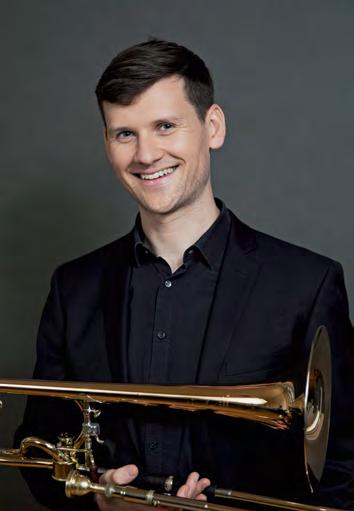
The MSO will welcome two of the world’s finest brass players in the coming months to make their MSO debuts. In April Australia’s Jonathon Ramsay, Principal Trombone of the Berlin Philharmonic, will perform Joe Chindamo’s Ligeia Concerto for Trombone and Orchestra, a piece based on a short story by Edgar Allan Poe. Conducted by Benjamin Northey, the program also features symphonic dances from Berstein’s West Side Story and Gershwin’s An American in Paris. The following month will see Norwegian star trumpeter Tine Thing Helseth make her MSO debut in May, performing Mieczysław Weinberg’s Trumpet Concerto. Regarded as one of the finest works for trumpet since the concertos of Haydn

and Hummel, it’s finding popularity on worldwide orchestral mainstages.
▪ American Stories: Bernstein, Gershwin and more, Thursday 11 April, 7.30pm and Saturday 13 April, 2pm at Hamer Hall, Arts Centre Melbourne, and Friday 12 April, 7.30pm, Costa Hall, Geelong.
▪ Quick Fix at Half Six: Bernstein, Gershwin and Chindamo, Monday 15 April, 6.30pm, Hamer Hall, Arts Centre Melbourne, proudly presented by TarraWarra Estate.
▪ Rachmaninov and Weinberg, Thursday 16 and Saturday 18 May, 7.30pm, Hamer Hall, Arts Centre Melbourne.
▪ Masterclass with Tine Thing Helseth, Wednesday 15 May, 6.30pm, Iwaki Auditorium.

This Easter will be the 300th anniversary of Bach’s irresistible oratorio, St John Passion. First performed on Good Friday 1724, the 2024 MSO performance will be its first since 2009 and the climax of the MSO Baroque Festival. Ask any of the MSO Chorus members what they’re looking forward to this year, and it’s likely they will list the chance to work with Stephen Layton (below). The worldfamous choral conductor will lead the Orchestra, Chorus and an all-star cast through Bach’s work – making this concert one of the artistic highlights of the year.
▪ St John Passion, Saturday 6 April, 7.30pm, Hamer Hall, Arts Centre Melbourne.
▪ The MSO Baroque Festival runs from 2-6 April at Hamer Hall, Arts Centre Melbourne. Tickets available at mso.com.au
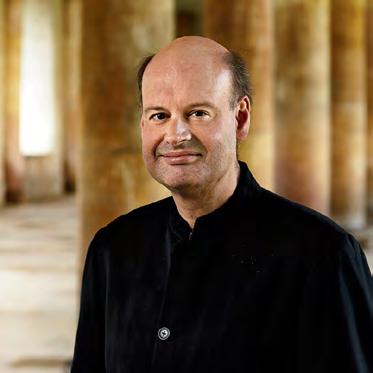
This year, the MSO is lucky to have one of the country’s preeminent composers, Katy Abbott as its Composer in Residence.
One of her key works is The Peasant Prince, a piece based on the picture book of the same name by the man known as Mao’s Last Dancer, Li Cunxin. Li’s autobiographical story of a peasant boy who became one of the world’s great dancers will be brought to life on the Hamer Hall stage in a presentation perfect for children aged 5-10 years, and their families.
Classic Kids: The Peasant Prince, Saturday 1 June, 10.30am and 12.30pm (relaxed performance), Hamer Hall, Arts Centre Melbourne. MSO for Schools performances will also take place for Prep-Grade 6 students on Friday 31 May, 10.30am and 12.30pm.
When mezzo-soprano Raehann Bryce-Davis sings, people listen; to a voice that now traverses boundaries in the world of opera. Ahead of her Melbourne Symphony Orchestra debut, Bryce-Davis speaks with Stephanie Bunbury about where she’s come from and where she’s going.


hen Raehann Bryce-Davis was in her first year of university in Arlington, Texas, her voice teacher took the class to see La Bohème. The mezzo-soprano, who now has a roster of engagements almost as dazzling as her recent reviews, didn’t get on with it at all. “I had fallen in love with this classical sound in a journey via crossover music,” she said in an onstage interview for Opera America last year. “From the time the wonderful Mimi walked on stage she was like” – she stages a wilting cough, hand on brow – “and I was like ‘oh my gosh, will she die already?’ And it was all downhill from there.” Whereupon she let rip a peal of laughter, joined after a moment’s hesitation by the audience.
It was only later, when she had ditched her business studies degree – “I wasn’t planning to be a starving artist; I was going to run companies and be a girl boss” – to become a music major that Bryce-Davis was lured back, persuaded by a DVD of Zeffirelli’s production of Turandot and her own dynamic approach to performance. “That was helped by the fact I’m not a soprano,” she says now. “So, a lot of those characters – ‘ooohhh, I’m dying of tuberculosis! ooohhh, I’m dying of a broken heart’ – were never in my repertoire. My girls are baddies. They are taking charge; they are doing their thing; there are a lot of empowered women who are outside the system. You know they call mezzos the ‘witches, bitches, and britches’? I don’t look much like I can pass as a traditional gentleman on stage necessarily, with my endowment, so the britches are mostly out. But the bitches, we

get lots of those. Which, honestly, is much more fun for me to play.” Playing is important to Bryce-Davis, whatever she sings. After Arlington, she trained at the Manhattan School of Music where, Bryce-Davis says, her teacher in the early stages of the course came from musical theatre. There was an emphasis on acting. “That’s what they do, find ways to tell the whole story in a one-minute monologue or whatever it is,” she says. “All of that ‘who, what, where, why’ backstory. Who are they? What are the obstacles this character is facing?”
Bryce-Davis will be singing in Mahler’s Symphony No. 3 with the Melbourne Symphony Orchestra in March. She sees it as a return to her musical beginnings when, as a young hopeful, she went to Baden bei Wien for an intensive summer course singing Lieder under some of the leading instructors in the world. “I loved Lieder with all my heart because it’s a whole opera in one song and you’re the director, you’re the conductor, and – obviously – you’re the performer,” says Bryce-Davis. “You have so much creativity you can put in one small song, like a whole world in three minutes. And of course, some of the work I performed that summer was Mahler.” She recently did Mahler’s Second Symphony – “the most glorious music in the world” – and is set to perform Das Lied von der Erde in Luxembourg in June. She is now 37. “I’m very excited to get back to the roots.”
Bryce-Davis has always been surrounded by music. She played violin and clarinet in the school orchestra, took piano lessons with her sisters, and was influenced by her mother who was a classically trained singer. That said, nothing came handed on a platter. Her parents emigrated from Jamaica to Mexico, where Bryce-Davis was born, then moved to Texas. Her father is now a doctor in Fort Worth, while her mother teaches music and runs a community arts centre. “But they were students when we were young, so we had some of those ‘where-will-the-next-mealcome-from?’ situations. Now, thanks to God and my parents’ perseverance, they’re living very well, it all worked out and the wager paid off, but…”
Bryce-Davis had her own tough times when she first went to Europe, forced to wire her sister for emergency funds, but it never occurred to give up trying. “I’d seen my parents go through so much more, coming from Jamaica to Mexico, making their way out of nowhere on faith and education and hard work. When you have a front seat to that experience, failure is not an option.”
So she worked hard. Her Viennese instructors told her, in no uncertain terms, to rein herself in. With a voice as rich as hers, and a range so impressive (one coach called her a chameleon), Bryce-Davis was often told she was too loud. “I had a larger instrument and a lot of people there had a smaller instrument, so many teachers would be like ‘smaller, smaller, you don’t need to yell! It’s intimate!’, and I’d be (whispering) ‘Okay!’” Eventually, Bryce-Davis found teachers to show her how to sing in her own voice, finding intimacy in the colours she brought to it. Her list of credits makes wonderfully exhausting reading, and the list of awards and prizes – including a prestigious George London award –impressive, but there are always the parts missed. Bryce-Davis is a founding member of the Black Opera Alliance, which supports young Black singers with information, resources and a sense of community.
stages that look like the world we come from, not just in opera but on our concert stages, in museums, everything,” Bryce-Davis says with enthusiasm. “Because art is how we wrestle with the big questions of humanity and consciousness and really, who we are as people. And that can’t just be from one perspective. We must find ways to be more inclusive.”
One obvious issue, she points out, is how much it costs to compete. “A voice lesson for one hour in New York can be 250 dollars. For one hour. And you need a weekly voice lesson.” Auditions cost money: getting to the audition might require airfare and a hotel. People don’t realise, she says, what a privileged business it is. “That has to be part of the equation.”
Inevitably, there are also issues with the works themselves. “Primarily, these stories were created at a time when Mozart could write characters that said, ‘because I’m black and ugly, that’s why you don’t like me’. That was an acceptable thing to say in the 16th-century The Magic Flute. But in 2023, it’s clearly going to be a problem.” Bryce-Davis has jumped at the chance to perform new works where nobody is arguing for the preservation of old tropes and there are strong roles for people of colour and interesting female characters. “The last three productions I worked on had women conductors who are worldclass.” When we speak, she had just been part of an all-women creative team in Rene Orth’s 10 Days in a Madhouse at Opera Philadelphia – “a beautiful revelation” –and is about to appear as Ella in The Life and Times of Malcolm X by Anthony Davis –only the second opera by a Black composer ever to be performed at the Met. “It’s wonderful to be part of these creations that are not what people traditionally think that opera looks like,” she says.
“Because art is how we wrestle with the big questions of humanity and consciousness and really, who we are as people. And that can’t just be from one perspective. We have to find ways to be more inclusive.”
Opera has a race problem, she says. Classical music has a race problem. Bryce-Davis muses on the fact that she will never know what parts she missed because casting wasn’t colour-blind. “Every now and then a story will leak out,” she says. “‘Oh, they told her she could never be a Violetta because she was Black’. I have two minds about it. Because for myself, as an artist, I empower myself with my family – who always strengthen me – and faith, so that whatever happens outside the home I know I am supported, I am grounded, I feel and know that Black is beautiful, I know that as a woman I can accomplish anything I put my mind to. Those are the values that my parents instilled in me and that’s how I think about myself as an artist. But we can’t have just that conversation. You also must think about the systemic issues.”
That is a conversation that circles back to any number of proposed approaches, ranging from the people who don’t believe there is a problem because it has never affected them, to the proponents of colour-conscious casting, “purposely creating
Change is afoot in her own life. She is finishing her debut album of music she has commissioned, which she plans to turn into a one-woman show. “I produced some videos during lockdown where I realised that I really love creating my own projects, because nobody can say exactly what I want to say.” The past year has seen Bryce-Davis constantly on the road but is now hoping to buy a house in the next year with her fiancé, women’s clothing designer Allan Virgo They have been together five years. “It’s a hard thing to be partner to an opera singer, but he’s patient and wonderful. His being a fashion designer is a wonderful collaboration because he’s designed several dresses I’ve worn for stage. The dress that I’ll wear for that Mahler 3 is designed by him.” Otherwise, she just wants to do more of everything. “I have gigs at a lot of the A houses in the coming years. Concert is, of course, at the heart of my world, but I want to put out more albums and have more crossover experiences into nontraditional spaces. More of everything! That’s the big plan.” ■
Jaime conducts Mahler 3, 14 & 16 March, 7.30pm, Arts Centre Melbourne, Hamer Hall ; Masterclass with Raehann Bryce-Davis, 12 March, 6:30pm, Iwaki Auditorium .

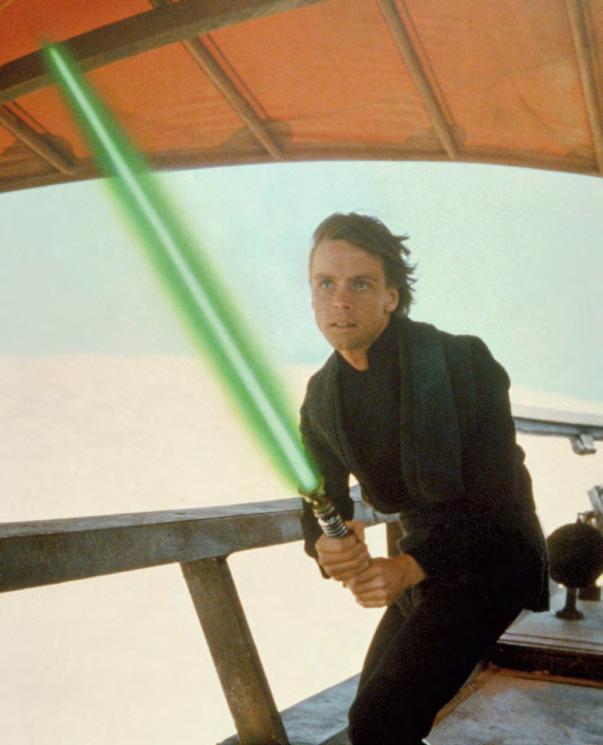



From Greek tragedies to Marvel movies, our favourite stories all tell ‘the hero’s journey’, the narrative archetype that’s been a guiding theme for the Melbourne Symphony Orchestra’s 2024 program.
Words: Katie Cunningham
Even if you don’t know the hero’s journey by name, you’ll recognise it in action. It’s Dorothy in The Wizard of Oz, ripped away from Kansas by a tornado and instructed to follow the yellow brick road home. It’s Harry Potter and his years-long battle against Lord Voldemort, or Homer on his Odyssey And it’s what underpins many of the stories and pieces in the Melbourne Symphony Orchestra’s 2024 program.
The forthcoming program features orchestral re-imaginings of everything from century-old Strauss to contemporary favourites like Star Wars. It’s part of a deliberate decision by the Orchestra to highlight some of history’s most memorable ‘great stories’ – the tales that move and inspire us time and time again.
“All music has the ability to tell a story and paint a picture, and we wanted to highlight that in different ways to our audience,” explains Katharine Bartholomeusz-Plows, Head of Artistic Planning at the Melbourne Symphony Orchestra.
There are over 50 productions in the 2024 program, from evocative soundscapes to works inspired by great literature. Many of them can be best understood through the lens of the hero’s journey, a universal story pattern we all recognise: the protagonist goes on an adventure, learns a lesson, uses that newfound knowledge to do something extraordinary, then returns home changed. It typically features tests of character, a search for identity, and an ultimate battle.
Craig Batty, an academic from RMIT University who has long studied the use of the hero’s journey in storytelling, says that while we may most readily associate the story pattern with flashy Hollywood films, its origins actually date back to age-old fairytales and folklore. Even Aristotle’s three-act structure of setup, confrontation and resolution can be viewed as a predecessor to the hero’s journey. “These stories have always been there,” says Batty.
The function of the hero’s journey, Batty feels, is to help us understand and take meaning from stories. “It also gives us enjoyment,” he adds. “There’s real pleasure, to be honest, in these kinds of stories. If you’re watching a horror film or a thriller, for instance, you’ve been worried that the main character might

get murdered or will never find out [who the killer is]. But by the end, they do and everything’s safe again. It gives you that kind of resolution pleasure.”
While the hero’s journey may seem like a simple story structure, it can bring to life stories of all shades. Two of the most widely loved stories being reimagined by the MSO in 2024 are The Lion King and Star Wars. In that animated Disney favourite, it’s Simba we follow on his hero’s journey to take his rightful place as king of the Pride Lands. And in Star Wars, we cheer as Luke Skywalker undertakes an epic mission to rescue Princess Leia and defeat the Empire.
At the hands of the MSO, both films screen with their digital music stripped out while the Orchestra recreates the score live, under the lead of conductor Nicholas Buc. It’s a way for fans to see their favourite flicks as they never have before. “Who doesn’t want to see one of their favourite films brought to life with live music?” says Bartholomeusz-Plows. “It really elevates the filmviewing experience.”
Luke Speedy-Hutton, Melbourne Symphony Orchestra Library Manager, adds that these screenings are a great accessible entry point to the opera for younger audiences – a welcoming environment where “people will clap and cheer” and even dress up in costume for the Star Wars screenings. Also created with little eyes and ears in mind is a performance of Peter and the Wolf, another hero’s journey tale about the importance of bravery and taking chances, brought to life with puppets and MSO musicians.
But at the more formal end of the spectrum, Speedy-Hutton is also excited to see the MSO tackle Romeo and Juliet in a vivid depiction under the baton of Chief Conductor Jaime Martín. And, most of all, he can’t wait for Strauss’ Ein Heldenleben – literally ‘A Hero’s Life’ in English. “It maps the archetypal hero’s journey,” he says. “And it’s got everything – it’s so passionate, it’s so powerful, it’s so grand. You can really feel it.” Also led by
“M ost songs or compositions have a narrative arc –it eases you in, then it takes you somewhere else, then it brings it back or calms you down .”


Martín, this special three-act program contains the overture from The Wreckers by Ethel Smyth, Debussy’s divine masterpiece La Mer, and, finally, Strauss’s classic piece. To bring the epic to life, there will be around 100 musicians on stage – both the MSO and visiting musicians from the Australian National Academy of Music. “It’s such a monumental work for orchestra – a 45-minute workout for all of the musicians,” describes Bartholomeusz-Plows Inspired by Beethoven’s Eroica Symphony, Strauss wrote his famous tone poem to depict the various key ingredients in the life of a hero, including friends, foes, battles, and works of peace. A topic of debate is whether Strauss based the work on himself – something he formally denied, “though in the way in which Strauss references his own music, it makes you think he thought himself was the hero,” Bartholomeusz-Plows says. But whatever its source, the triumph, trumpets and swelling sounds of Ein Heldenleben paint a grand portrait of the heroic subject.
Batty feels that just like a Hollywood movie or a centuriesold folk tale, a piece of music can take us through the departure, victory and return of the hero. “Most songs or compositions have a narrative arc – it eases you in, then it takes you somewhere else, then it brings it back or calms you down,” he says. “So, you can see how even music gives you this bodily, transcendental experience of going through the motions sonically.” Whether it’s through 18thcentury compositions or intergalactic battles, the transcendental is exactly what the MSO’s 2024 program aims to achieve. ■
Star Wars: Return of the Jedi, 18-24 April, Arts Centre Melbourne, Hamer Hall; Jaime conducts Debussy and Strauss, 9 & 11 May, Arts Centre Melbourne, Hamer Hall; Jaime conducts Romeo & Juliet, 18 & 20 July, Arts Centre Melbourne, Hamer Hall; Classic Kids: Peter and the Wolf, Saturday 10 August, Arts Centre Melbourne, Hamer Hall .

There is no MSO without the MSO Chorus. Need proof? In 2024 alone, the Chorus gives voice to Carmina Burana, The Planets, Fauré’s Requiem, Beethoven’s Ninth, Kaddish: A Holocaust Memorial Concert and St John Passion. Words: Elissa Blake Photography JAMES
GEER
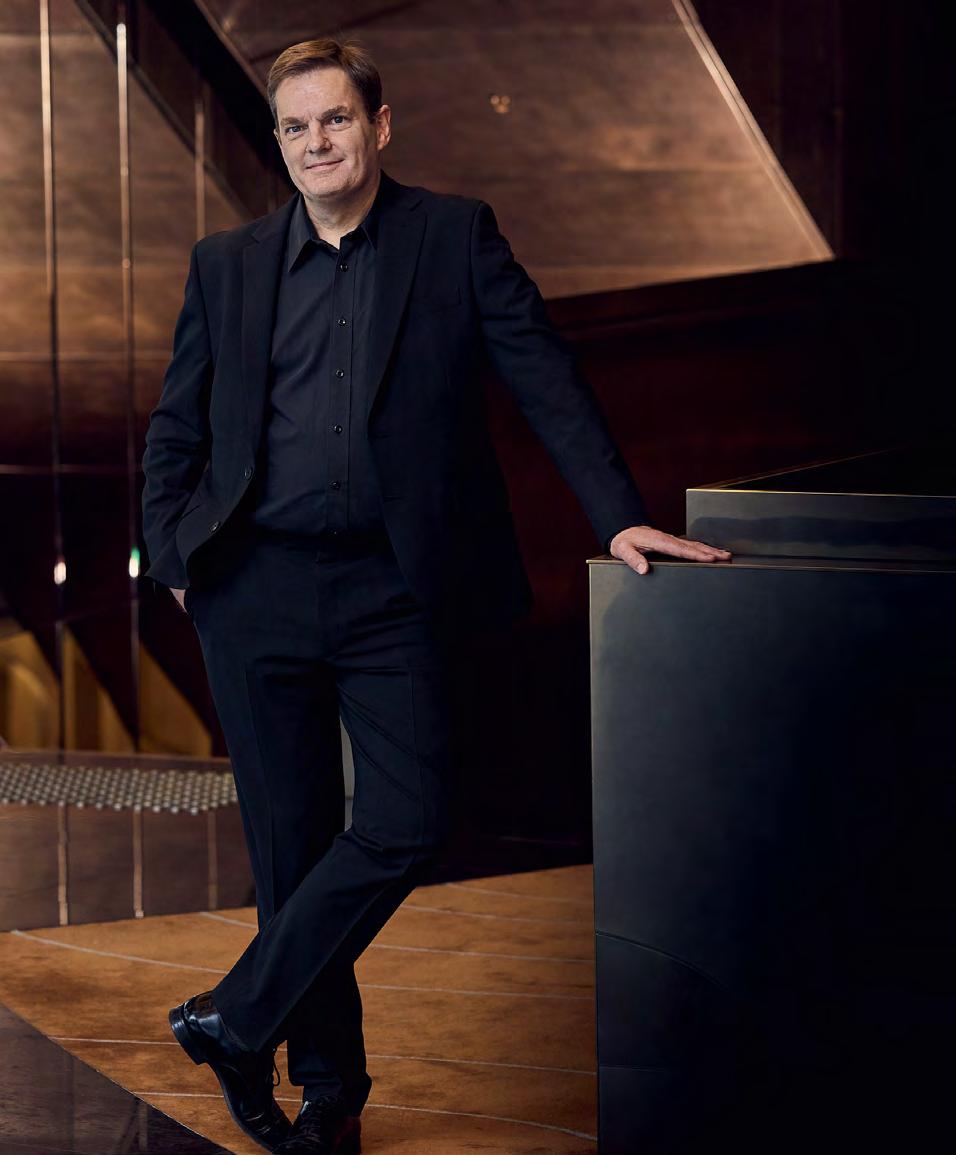
The Melbourne Symphony Orchestra Chorus is made up of just over 190 volunteer singers – a diverse community of ages, working backgrounds and cultural origins – who come together to make a unique kind of magic. Some chorus members are trained; others have never had a lesson in their life. Some have sung at school or in community choirs and most are juggling full-time careers, university studies and family lives alongside weekly Chorus rehearsals – a commitment that expands into nightly rehearsals during production week. It’s a challenge they embrace for the sheer love of singing together.
The human voice is a unique instrument; expressive and highly versatile, adding a palette of colours to orchestral sound. Of course, the voice can also add words, and the emotions in those words often communicate in a way that instrumental music can’t. It’s a moving experience to see and hear 120 people behind and surrounding an orchestra.
I’ve been the MSO Chorus Director since 2017. I grew up in the UK and started my singing career in Exeter Cathedral Choir. Since then, I’ve performed with many choirs and ensembles throughout Europe, including nine years with the Choir of Westminster Abbey in London.
I love the variety of works the MSO Chorus covers, with 2024 shaping up to be a fantastically varied season. We start with Bach’s St John Passion, as part of MSO’s Baroque Festival. The solo vocalists tell the story of the death of Christ and the Chorus comments on it, adding emotion and meaning. It’s a wonderfully clear demonstration of the role of the Chorus in the MSO. Fauré’s Requiem is also loved by many; it’s one of the most sublime pieces written for choir. We’re lucky to have Siobhan Stagg as a soloist on this piece, which I’m very much looking forward to.
The Chorus relishes learning new repertoire. In 2023 year we worked with American trumpeter and composer Wynton Marsalis, and it was the most wonderful journey, very much outside our comfort zone. We weren’t quite sure what we were doing or how to do it at first, but we had an expert from New York come to help, and Marsalis himself for production week. It was an almost two-hour piece of immense complexity and yet pure simplicity – a discovery of a wonderful new world and the Chorus lapped it up and loved every minute of it.
Warren’s 2024 choral program highlights: Bach’s St John Passion, Fauré’s Requiem, Song Cycles (a Chorus-only concert).
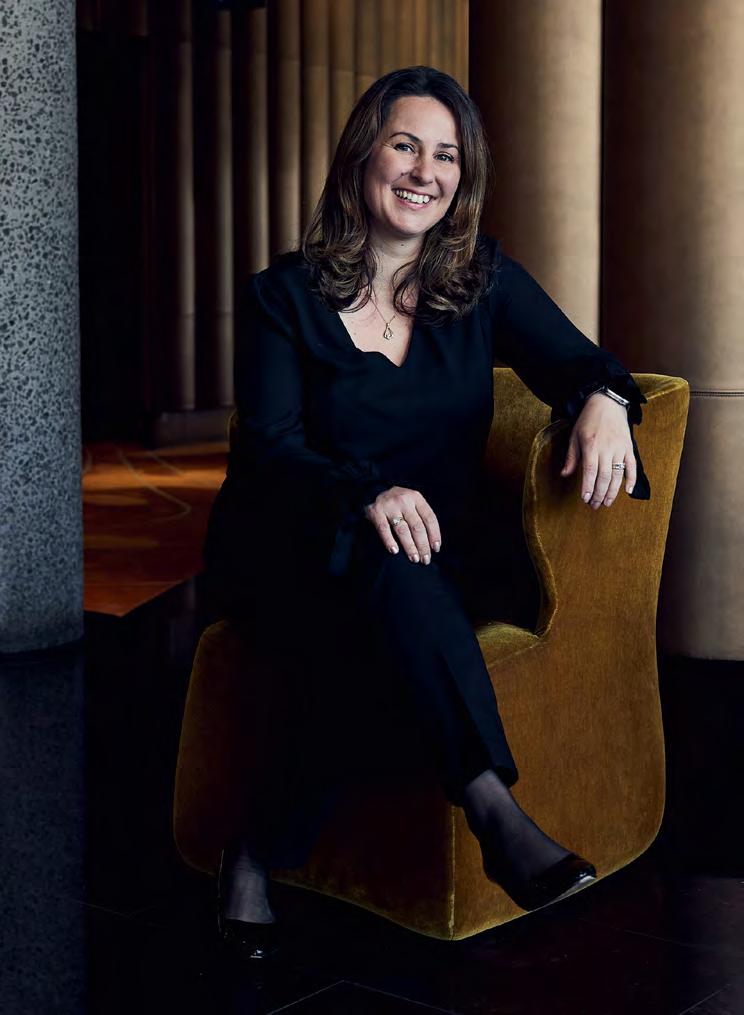
Being part of the MSO Chorus is more than a hobby for me; it’s an integral part of who I am. The American composer and conductor Eric Whitacre once said, “When people sing together, their heartbeats become in sync.” It’s an extraordinary experience, transcending the
“Being part of the MSO Chorus is more than a hobby for me; it’s an integral part of who I am.”
individual for a full-body immersion in the world of music. Call me a choir nerd, but this is who I am. I joined the Chorus when I was just 18 years old. It was 2002, and I had entered the Victorian College of the Arts. Back then, I auditioned for both voice and French horn, and while I got in on the French horn, my love for singing never waned.
After studying, I worked at the MSO in arts administration roles and eventually became chorus coordinator of the MSO Chorus in 2009. I loved it but it meant giving up singing. I then had two children and when I noticed my son’s primary school didn’t have a music program I was inspired to make a career change into music education. I now deliver a music program to 705 primary aged students.
But in 2022, I felt a strong desire to return to the Chorus. It was like a magnet. I auditioned and they welcomed me back as a Second Soprano.
Singing with the orchestra, being a part of this remarkable ensemble, and performing incredible repertoire all bring me immense happiness. Some of my most cherished experiences have been with the Chorus, whether it’s touring, collaborating with renowned conductors and soloists, or tackling new and diverse musical styles. Balancing rehearsals, a full-time job and a family is challenging, but the magic of show week makes it all worth it. The volunteer chorus members are a special breed. We do it because we love it.
Helena’s 2024 choral program highlights: Fauré’s Requiem, Mahler Symphony No.3, Handel’s Messiah – “It’s not Christmas without it”.
“I want to encourage people to audition for the Chorus, especially people from diverse backgrounds.”
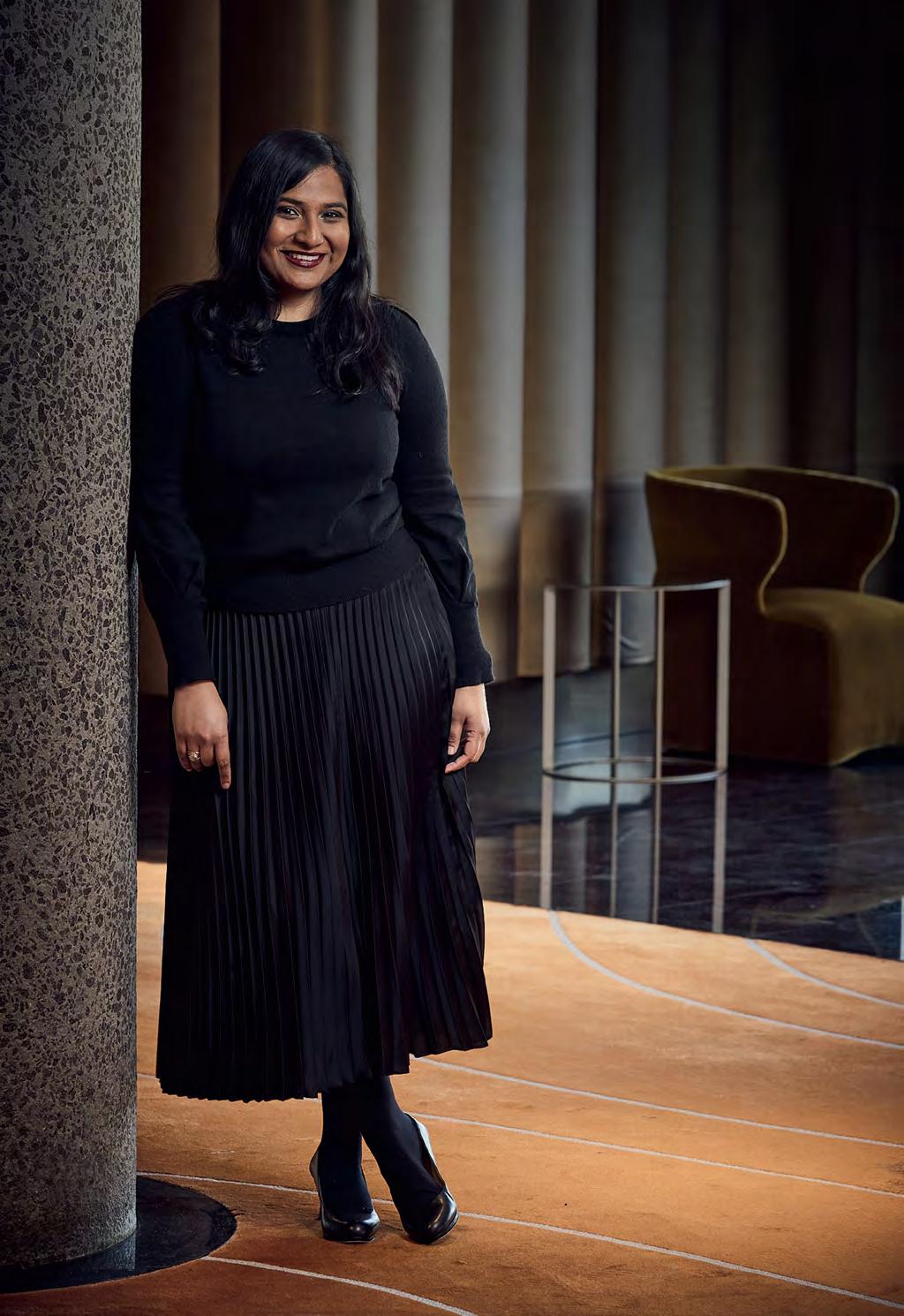
My family says I could sing before I could speak. Growing up in Chennai in India, I would sing along to movies and musicals. Our neighbour suggested I have singing classes and that’s where it all began. When I moved to Melbourne for university, music was on the back burner. I wanted to audition for the MSO Chorus but assumed that I wouldn’t be taken seriously because I’m not from here, and I had the impression all the singers had training at a university level. It was my teacher, mezzo-soprano Suzanne Johnston, who encouraged me to give it a go. She said it would allow me to sing more often and help me get over my stage fright.
I found the Chorus warm and welcoming right from the start. I still love meeting new people in the Chorus, and the chance to sing world-class repertoire and work with conductors from all around the world is amazing. Melbourne is a great city to be in if you love music.
One of my biggest highlights includes the concerts we did with Wynton Marsalis; I’ve been a fan of his for years. I also loved working with Sir Andrew Davis on Handel’s Messiah. He’s worked with the biggest stars in the world and there he was, on stage with us! I loved his quirkiness and sense of humour, as well as his style of conducting. I also learned a lot from Deborah Cheetham Fraillon through Eumeralla, a war requiem for peace, which is sung in Gunditjmara language. I’m now an Australian citizen and I felt such a sense of pride to work with her.
I want to encourage people to audition for the Chorus, especially people from diverse backgrounds. If you can sing, are passionate and have some experience, do not be intimidated or scared. Come and be a part of it. The more the merrier!
Shirin’s 2024 choral program highlights: Bach’s St John Passion, Kaddish: A Holocaust Memorial Concert, Carmina Burana – “It’s always a party!”
“It’s a unique feeling of connection, almost like a flock of birds when they change direction and shape in the air; you can literally feel the dynamic of the work and the music changing across the group.”
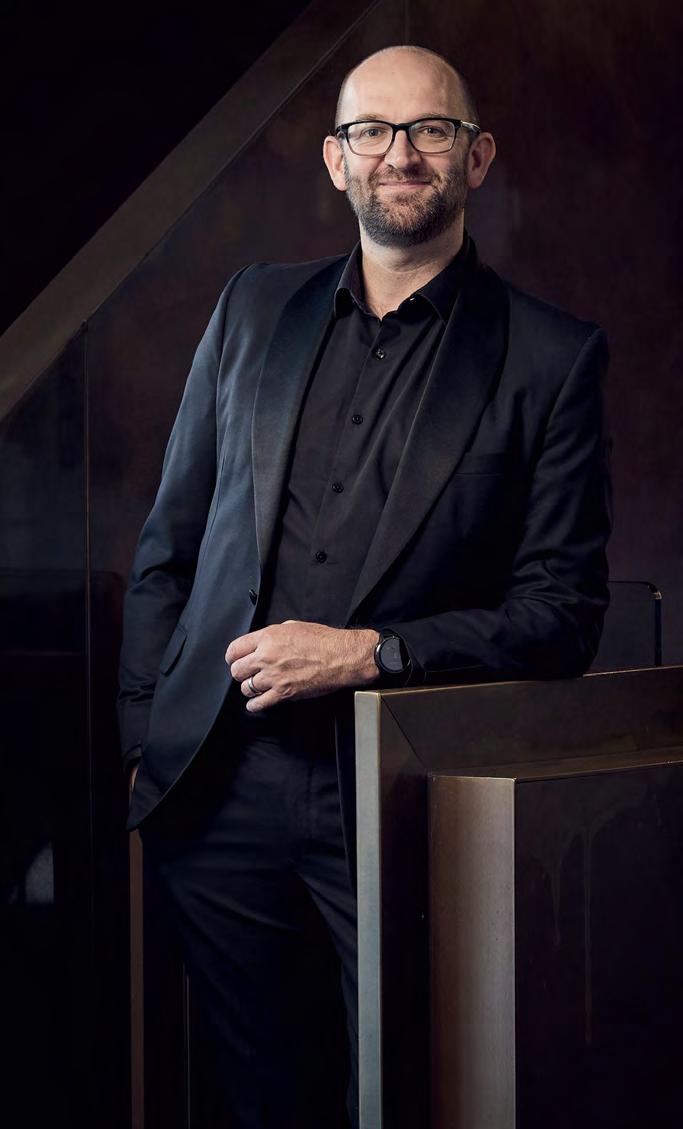
It’s incredible to stand and sing with 80 or more singers. You really feel that your body is your instrument and that this group of human beings has a common purpose. It’s a unique feeling of connection, almost like a flock of birds when they change direction and shape in the air; you can literally feel the dynamic of the work and the music changing across the group.
I love the big, bold works like Mahler’s Symphony No.2 and Carl Orff’s Carmina Burana. The emotions and feelings I get from a well-known large-scale piece of music are intense, but I also love learning new music, such as Deborah Cheetham Fraillon’s Eumeralla, a war requiem for peace. It was so meaningful and raw and powerful. New music keeps us relevant and ensures organisations like the MSO stay alive. My day job is in financial services, which can be moderately stressful, so singing in the Chorus is a way for me to disconnect and lose myself in music. I’m also on the MSO Chorus committee, which has some input into the MSO program and helps maintain an open dialogue between the Chorus and the Orchestra management. I played a part in organising the Chorus tour to Singapore in 2024, and I’m keen to help bring the Chorus to the forefront of the MSO’s major partnerships. I’d love to widen the audiences and get more engagement, that’s part of my journey. ■
Simon’s 2024 choral program highlights: Carmina Burana in Singapore, Kaddish: A Holocaust Memorial Concert and Beethoven’s Ninth.
The MSO Chorus will feature in 10 soul-stirring concerts in 2024, as well as the traditional ANZAC Day dawn service at the Shrine of Remembrance and a trip to Singapore to perform Carl Orff’s epic Carmina Burana. The concert season includes blockbuster favourites Holst’s The Planets, Mahler Symphony No.3 (with the electrifying American mezzo-soprano Raehann Bryce-Davis), Beethoven’s Ninth with the delightful Ode to Joy and a star-studded line-up of soloists, and Handel’s Messiah, as well as lesser-known works such as Leonard Bernstein’s Kaddish: A Holocaust Memorial Concert. Audiences can enjoy brand-new works from Tan Dun’s choral concerto Nine - a response to Beethoven - to the Chorus-only concert, Song Cycles, with the contemporary choral music of Jonathan Dove and Australian composer Joe Twist. Fans of the Chorus will appreciate Fauré’s sublime Requiem with soprano Siobhan Stagg, and Bach’s St John Passion, a special 300th anniversary performance. The Ryman Healthcare Winter Gala performance of Carmina Burana is not to be missed.

Norwegian trumpeter Tine Thing Helseth reflects on her musical journey and how she keeps her feet on the ground with music in her soul. Words by Stephanie Bunbury
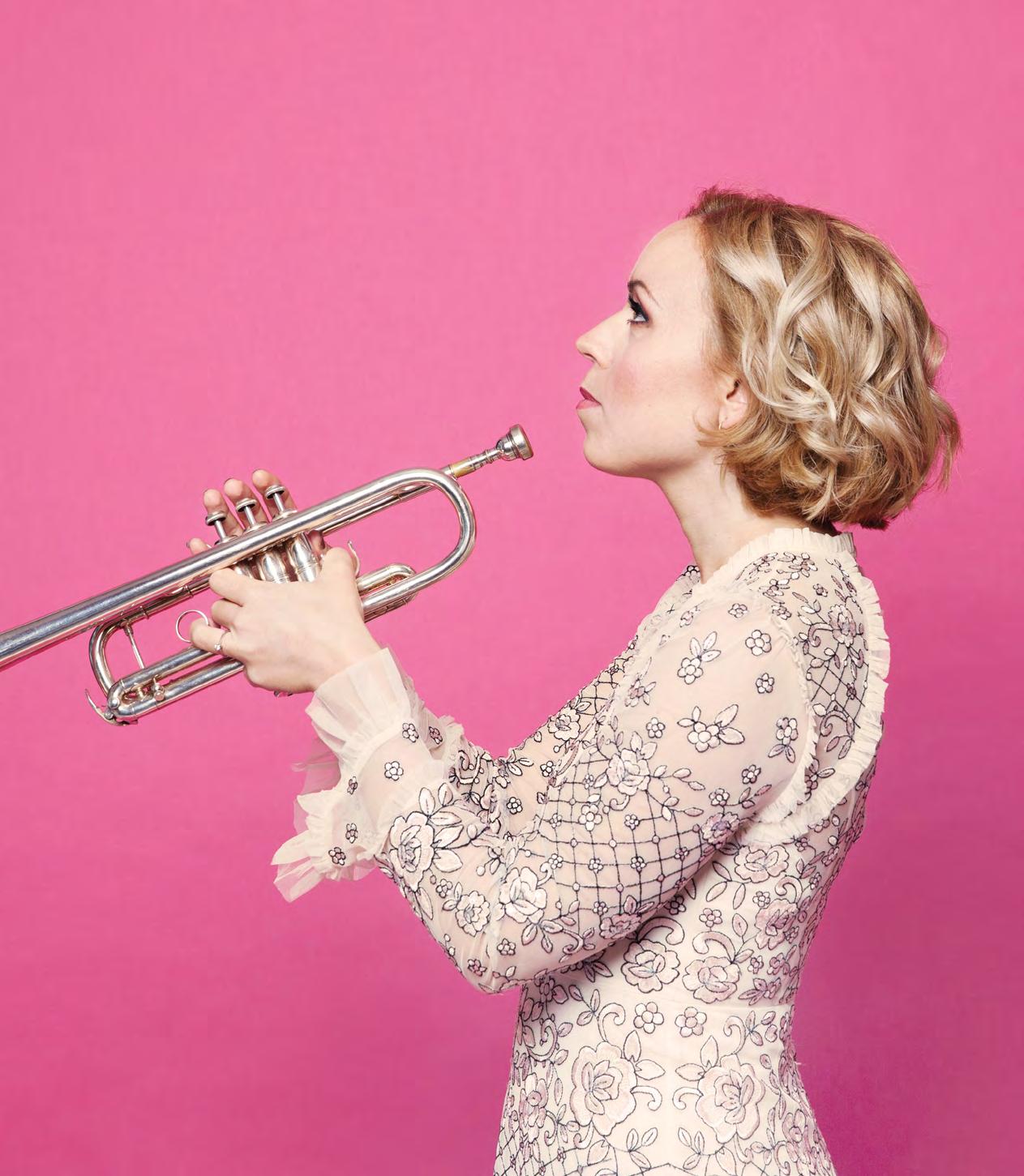
With time comes reflection. “One of the great things about getting older – on top of having more experience and perspective – is that if there’s something I want to do, I do it,” says trumpet soloist Tine Thing Helseth.
A sentiment she’s taken to heart, Helseth’s list of ‘things she wants to do’ also includes programming a chamber music festival, leading an all-female brass ensemble and singing with a jazz band at the most famous jazz club in her home city of Oslo. What’s more, she plays at all these places barefoot. “When I was younger, I always wore heels,” Helseth explains. “But at some point, I said ‘no’. I wanted to feel more grounded. Yeah, it feels good! I feel very free. I feel like I’m ready for anything.”
Helseth has been playing trumpet since she was six. It was only when she started playing abroad that she realised not many women played brass instruments, especially in orchestras. It wasn’t like that in Norway; both her parents played in amateur brass bands and there were just as many girls as boys in the school band. Now, Helseth regularly hears herself described as inspirational, which ‘feels beyond surreal when I’m just me, sitting in Oslo”. At the same time, as an old Spice Girls fan, she is all for fostering Girl Power. “So of course I think, or hope, that it is an inspiration.”
Reflecting on her childhood, Helseth isn’t sure when she set her mind to playing music professionally. The ambition seems to have been always with her. “All my friends from school would say ‘oh yes, Tine, she always wanted to play the trumpet’. Of course, when you are a kid, you don’t realise what it takes. That’s the good thing about being a child! Once you are in it, you realise it’s hard work, but it’s worth it.” At 13, she started entering competitions. “There was the Eurovision Young Musicians Competition in 2006. I got second prize and it just kind of happened. I started travelling the world when I was 18.”
Critics have praised Helseth’s clarity, sweetness of tone, seamless ornamentation and, above all, her lyrical expression. She was always intent, she says, on finding her own voice. “From when I was a kid, the thing I thought was the most fun was when I just played a nice melody, a beautiful song,” she reflects. ”I loved doing sightreading, not just hitting the right notes and getting the timing right, but making up phrasing and playing different characters. When I was very young, our teacher encouraged us to play the same tune different ways, like a ‘happy mouse’ or a ‘sad elephant’. Just playing around – which is something I kept up, as one of the things that feels very ‘me’.”
Of course, she adds, playing well also requires both a physical talent for whatever instrument you choose and a mastery of technique. “You need to be able to use the tools in your toolbox to do what you want musically. And you’re never done with that: you can always evolve, and you can always play better.” That said, playing music is not an athletic feat. “It isn’t the sport element that should be the focus. It should be the music and how it sounds.


And it shouldn’t look hard, even if it is.” Again, it is the voice that matters. “Because there needs to be a reason why people will listen to what I have to say. And that shouldn’t be the same as what everyone else has to say, or how everyone else sounds.”
That said, the piece Helseth will be playing with the Melbourne Symphony Orchestra in May – Polish composer Mieczyslaw Weinberg’s Concerto for Trumpet and Orchestra (1967) – is brimming with technical challenges and is, quite literally, a blast. “It’s very much a physical piece,” she laughs. “There are a lot of fun things going on, not only in my part but with the orchestra as well; it has this nice mix of long, beautiful melancholic lines, but then it’s almost brutal in places, so I think for the audience it’s very exciting just to be on the journey. You never know what’s coming. And the last movement is extra cool, because he uses small quotes from different places in the orchestral literature that I think people will recognise.”
Helseth’s approach to both playing and life has undergone a recent radical shift after a cancer diagnosis two years ago. For eight months she did not touch the trumpet: entirely concentrating on her health and at times, she admits, felt she didn’t care if she never played again. When she did eventually return to it, it took only about a week to retrieve the physical knack of playing. “It’s like riding a bike, the body remembers. But with the chronic fatigue I now have, the body feels different, so I had to discover a different way of playing. Which is also exciting, in that I must adapt. Life changes anyway, with age – I’m only 36, but being 36 is different to being 18. So, everything evolves all the time, whether you’ve had a serious illness or not.”
Life is another matter. Helseth had already taken a long break from performing in 2015, when she was playing over a hundred concerts a year and, as she puts it, “hit the wall”. With her illness, priorities began to shift. “Suddenly you realise that we only live this one time, it’s not that long and you never know what will happen. Playing the trumpet is great, but it’s not the most important thing. The most important thing is to feel healthy and be with the people I love.”
Now, Helseth travels much less than she used to do; after our interview, she says, she plans to lie on the couch. “It is a journey,” she reflects. “This life that I’ve lived since I was a teenager, the life of a soloist, is a lot. I want the tempo to be a bit slower and be able to experience and see what’s going on around me.” Playing the trumpet, she reminds herself, is her job. She has to keep that in perspective. “But that has made playing even more special, somehow,” she adds. “Because it feels like I really chose it.” ■
Rachmaninov and Weinberg, 16 & 18 May, 7:30pm, Hamer Hall; Masterclass with Tine Thing Helseth, 15 May, 6:30pm, Iwaki Auditorium . P


“Playing the trumpet is great, but it’s not the most important thing. The most important thing is to feel healthy and be with the people I love.”
One day every year community musicians have the chance to live the dream: performing with the Melbourne Symphony Orchestra.
By Patricia Maunder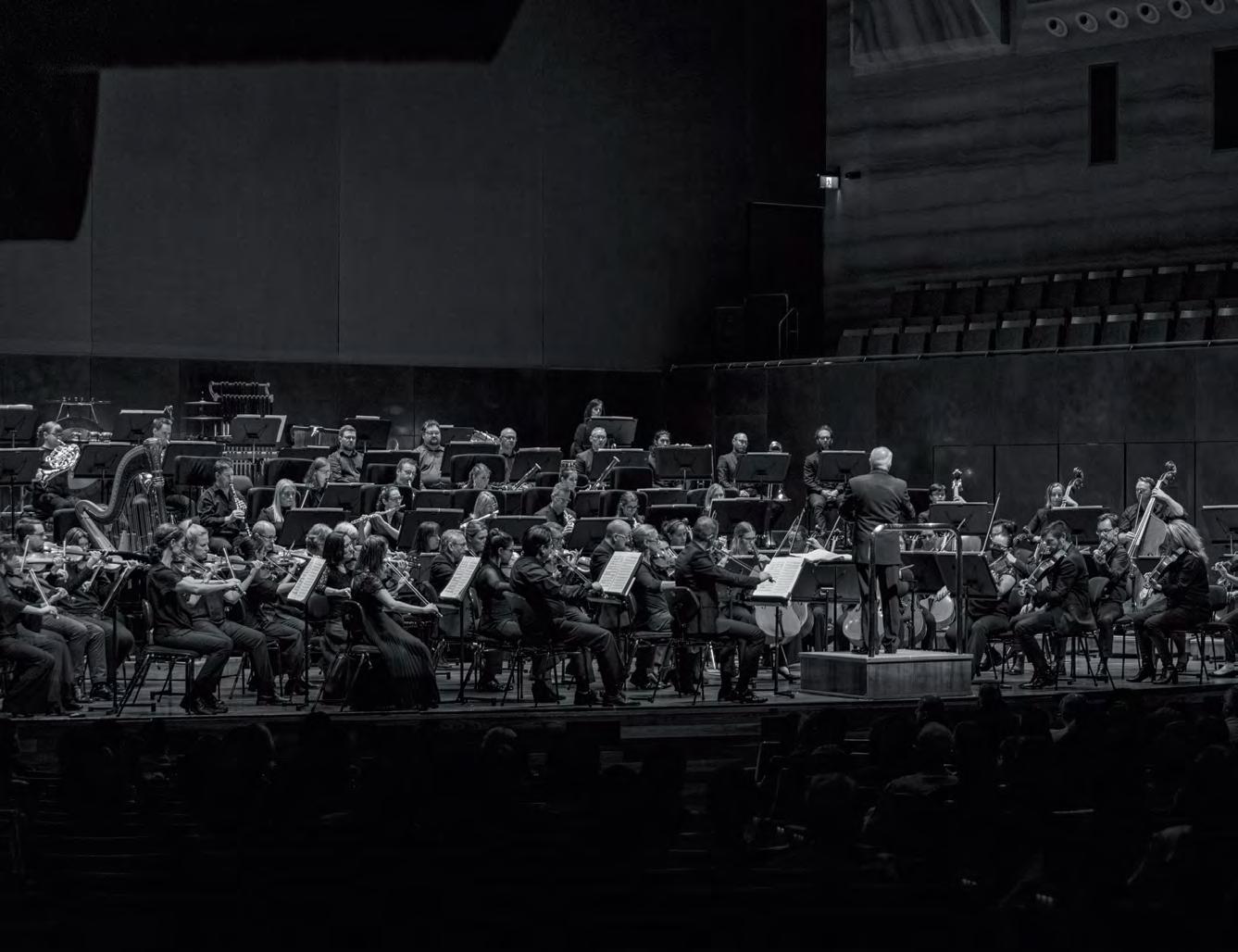

How does the Melbourne Symphony Orchestra fulfil its vision of ‘enriching lives through music’? Usually by presenting some of the most celebrated concerts in town, but there are also under-theradar events that enrich lives in less conventional and perhaps even more profound ways. Events such as Symphony in a Day – an opportunity for community musicians to play shoulder-to-shoulder with members of the MSO annually – is one such example.
These professionals comprise roughly one-third of the day’s orchestra, explains Head of Learning and Engagement Nicholas Bochner. “It’s about maximising the number of chairs available to community musicians… but having that scaffolding of the MSO players among the non-professionals just lifts the standard.” Furthermore, they are led by the likes of the MSO’s Chief Conductor Jaime Martín. “It’s quite extraordinary for them to have that kind of experienced, charismatic individual on the podium,” says Bochner.
Symphony in a Day began in 2012 as part of the MSO’s increasingly broad and deep engagement with Victorians. In the past, “the place of symphonic music in society was assumed, but it’s been getting squeezed out,” observes Bochner, who joined the MSO in 1998 as Assistant Principal Cello. “Over the last three decades the Orchestra has been taking more and more responsibility for ensuring symphonic music is still there for the general community.”
That’s something Bochner has actively championed throughout his career, even as a student when he designed and performed concerts for primary school children with his string quartet. “Communicating about music and connecting with new audiences is an integral part of being a musician,” he says, adding that this belief may stem from growing up listening to his electrician grandfather play piano.
It’s precisely for people like Bochner’s grandfather – with obvious musical skill and passion but who haven’t made music their career for various reasons – that Symphony in a Day was created. As Bochner observes, it has evolved into something more like “symphony in 24 hours”, with a rehearsal on a Friday evening and again the next day, culminating in a primetime performance. The audience is dominated by the community musicians’ friends and family, so an enthusiastic response is almost always guaranteed.
According to Bochner, who performed in several Symphony in a Day concerts before retiring as an MSO player a year ago, participants are diverse, from music teachers to CEOs. They are, however, often members of community orchestras – such as the Melbourne University Biomedicine Students’ Orchestra, which he conducts (another string Bochner has added to his bow lately, including being the MSO Cybec Assistant Conductor for Learning and Engagement in 2020-21).
These community orchestra members are “people who have gone to a very high level with instrumental playing, but at that crucial moment have decided to pursue a different course of study.” Bochner thinks that, in a way, they are more committed

“Over the last three decades the Orchestra has been taking more and more responsibility for ensuring symphonic music is still there for the general community.”
than professional players because “they do it in their spare time… and their passion is so strong”.
Recent Symphony in a Day concerts have featured Tchaikovsky’s Swan Lake and Dvořák’s Symphony No. 9 From the New World, while in 2024 Carlo Antonioli leads Mussorgsky’s Pictures at an Exhibition These programming choices are determined by balancing comfort levels with challenge.
“Community musicians probably want to play relatively wellknown symphonic works with us,” says Bochner. It can’t be too difficult, he adds, “but we’re not babying them. It’s meant to be a challenge, and it works best when you wonder if it’s going to come off or not. You get there on the day, they’ve all practiced, the conductor just brings it together, and everyone reaches a level that they weren’t sure they could even get to.”
He fondly recalls how “there’s a moment of exhilaration when you get to the end, and you’ve performed this incredible piece of music and everyone’s come together”, including Symphony in a Day’s diverse audience. “It’s a really joyous moment; a real joy in music and sharing.”
So what does it take to be part of this extraordinary experience? Applicants must be over 18, and Bochner recommends an Australian Music Examinations Board grade six qualification. He also suggests getting in early, but anyone hesitating is welcome to contact the Learning and Engagement team to have their questions answered. Otherwise “just apply and do it because it’s so much fun!” ■
Symphony in a Day is on 1 June at Hamer Hall. Applications to participate are now open, and tickets are available.
When Cameron Holland completed secondary school, he faced a difficult career choice: follow his passion for music at the Melbourne Conservatorium of Music or pursue a career in business. “I always loved music,” says Holland, who started playing piano at age four, then took up the violin after seeing Elton John’s concert with the MSO in 1986. He recalls thinking: “I’d love to be part of the MSO one day.”
After seeing an unused double bass at his high school, Holland switched to the larger instrument, which led to a long stint with the Melbourne Youth Orchestra and winning the Orchestra prize at Melbourne High School. But after making that difficult university choice “the bass took a back seat for quite a while.” His business career has led to his current role as CEO at the MSO Premier Partner Ryman Healthcare, while an MSO subscription has fed Holland’s musical passion.
Lately, he has also unexpectedly achieved that childhood ambition. After relaying his story to Jaime Martín at a sponsor event, Holland was surprised to hear soon after that he had been signed up for 2022’s Symphony in a Day. Dusting off the cobwebs and furiously practising for months helped Holland prepare for the concert, but he was still “very, very nervous” to play Dvorak’s 9th Symphony – conducted by Jaime Martín no less. Ultimately, however, he felt “elated” and the confidence gained by playing alongside the “pros” was invaluable. The experience prompted him to join a local community orchestra, so the reborn double bassist was considerably less nervous for the 2023 Symphony in a Day. “Something we talk a lot about in business is how to get teams working together,” says the CEO-musician, who is eager to sign up again for this year’s concert. “I think we can learn a lot from orchestras… it’s the ultimate team performance.”


Concertos by Bach and Vivaldi
Arias by Handel and Vivaldi and a 300th-anniversary performance of Bach’s St John Passion
Three-concert packages and individual tickets on sale now!
MELBOURNE SYMPHONY ORCHESTRA WITH ERIN HELYARD STEPHEN LAYTON SAMANTHA CLARKE DAVID GRECO MATTHEW TOMKINS RAUIRI BOWEN CHRISTOPHER RICHARDSON ASHLYN TYMMS AND THE MSO CHORUS WITH WARREN TREVELYAN-JONES
BOOK NOW MSO.COM.AU

Chinese ballet dancer Li Cunxin’s story of grit and determination proved perfect for adapting into an orchestral work ideal for young listeners.
Words by Kim Thomson Photography ALBERT COMPER

Australian composer and MSO 2024 Composer in Residence Katy Abbott knew she’d found a special book when she had an unexpectedly emotional reaction while reading it to her twins. “I remember sitting on the couch with my kids before bed one night – I had a twin on each side – and there was this particular part in the story where I just got really choked up,” she says.

“I really love pulling out those things to demonstrate different ways of hearing sound… that it’s not just a note or harmony set in a singular way – you can actually do something with that note to give it a different colour, a different feeling, a different flavour.”
“I had the thoughts, ‘Oh, if I’m getting choked up about this, that’s a signal for me that I can do something with this piece’.”
The story was The Peasant Prince, the picture book version of the acclaimed memoir and film Mao’s Last Dancer, which tells the story of ballet dancer Li Cunxin’s extraordinary journey from a rural Chinese village to the world stage. Abbott was tasked with adapting the story into an orchestral work, which was first performed by the Adelaide Symphony Orchestra in 2009 and will be presented by Abbott with the Melbourne Symphony Orchestra in June.
It was Li’s determination and courage that resonated with Abbott. “It wasn’t just about the grit – it was about the circumstances under which the grit and determination occurred,” she says. Abbott was also struck by the themes of family, and hope, as well as loneliness and distance from what is home that are woven throughout the story - themes that became key musical motifs as she orchestrated the piece. The work also includes narration of Li’s story which interplays with the orchestra.
As a trained teacher, Abbott was intent on creating a symphony that would resonate with young listeners and encourage them to think about music in a new way. She explains that the “story within a story” that Li tells of a frog (which represents Li) trapped in a well is one of the key themes to listen out for.
Musically, the frog theme has two parts; a “trapped static part” and “a rising and falling motif”, which appear consistently throughout the 30-minute work. “It starts with a double reed sound and it’s just two oscillating notes… it’s very linear,” explains Abbott.

“You might hear it with the woodwind, with some really breathy, glassy sounds, and then you’ll hear it warmly with the horns, then in different versions on the strings, and so on,” explains Abbott.
“I really love pulling out those things to demonstrate different ways of hearing sound… that it’s not just a note or harmony set in a singular way – you can actually do something with that note to give it a different colour, a different feeling, a different flavour.”
Since 2009, The Peasant Prince has been performed several times across the world. The Tasmanian Symphony Orchestra released a recording of the work in 2020, for which Li provided narration. Abbott flew to Brisbane for the recording.
“That was very moving,” she recounts. “I remember sitting there with him and at one point, he choked up when he was reading out his own story. It was beautiful, actually.”

Composing this piece was the first time Abbott had worked with a narrator and orchestra –an exercise that has proved unexpectedly fruitful. “In playing with [narration], I think I found another voice of mine,” she says. “I loved working with the narrator and the music so much that I now really want to deliberately incorporate narration, and I have been getting quite nuanced and detailed about exactly where the narration comes in.” Abbott has since incorporated narration into other works including Hidden Thoughts I: Do I Matter? and the forthcoming Hidden Thoughts III: Stories of Awe
Ultimately, she says, The Peasant Prince offers a chance for younger listeners to engage with orchestral music in a way that lets them “be whole human beings”.
“Then, when the frog starts to jump and hop, we bring the whole Orchestra in. The entire pitch range depicts the hopping of the frog, with low instruments going up quite high and then coming all the way down again to create these zigzags of up and down motion, of trying to get up and failing and falling. I tried to embed it in a way that wasn’t super obvious, but if you’re a keen listener and you know the theme of the frog, you might be able to hear it in different ways throughout the piece and see where it’s been fragmented or re-orchestrated.”
Another theme to listen out for is the “lonely” theme, a four-bar melody and harmony played on different families of instruments.
“I knew that I wanted to incorporate all the emotions because I can get frustrated with kids’ music – I think it’s changing now – but, particularly when I wrote this piece, there was still a lot of happy, bouncy, energetic music [for children].
“I remember as a quiet child, I used to get exhausted by that all the time. And, kids, although they are less experienced as adults with life, still have the full range of emotions that they experience.”
As this year's MSO program explores the theme of Great Stories and the heroes who feature within them, award-winning Australian author Sofie Laguna reflects on her allure to the 'antihero', a storytelling concept that draws her into the honesty of the voices she writes.
In the well-known Greek myth Ariadne, the daughter of King Minos of Crete falls in love with Theseus – a half-man, halfbeast living in an underground maze – who comes to Crete as a hero to slaughter a minotaur. Ariadne gives Theseus a ball of red thread which he unwinds as he enters the maze. Once he has slain the beast, Theseus follows the thread back out to Crete where he is reunited with Ariadne. This myth is a useful metaphor for the creative process. Everywhere is darkness, chaos, endless pathways in any number of directions save for the thread back to the surface.
That thread for me is the voice of a flawed and contradictory character. I am interested, it seems, in the journey, not of the hero, but of the antihero. When I look back at the books that I have written, each and every one is driven by a character that might be defined as an antihero. A hero in reverse. Anti, from the Latin, against. A kind of ‘opposite hero’. A character who struggles and whose history is complex. Unlike Theseus, my antiheroes are unsung. They live in disguise; most often misfits and outsiders. Might even appear ineffectual. These are the characters that interest me. Struggle is interesting. Overcoming struggle, and shining in the most deeply private and unsung of ways the world might never acknowledge, is important work.
I open my notebook to a blank page and write from the point of view of a character with something to say. That’s the thread I follow, that’s what moves the pen across the page. Sentence after sentence, each an invitation. This voice will be energised, playful and full of possibility. Otherwise, I could never keep a hold. It’s this energy, this playfulness that provides stamina. That gives me the drive and the desire to keep going, keep writing. It’s a long road to the end, and it can be fraught.
The process is largely unconscious; that is where the stories originate. That is the labyrinth from which they seek to escape –the unknown depths of the unconscious. I am motivated, in the first instance, by revelry in voice. The game of make-believe, when I become, for the time being, the character herself. But I am also outside words, guiding, shaping and steering. What a privilege to play both roles at once; both subject and object. One sentence leads
to another, one character to many, then characters to setting. These are the strands of the thread: language, rhythm, pace, structure, form. All help provide the antihero with an opportunity to show herself. To slay her own minotaur. To change the status quo. I am currently working on a new novel for adults, The Underworld.
One afternoon, I was sitting on the benches of my young son’s high school gym while he participated in an after-school basketball training session; I’d brought my notebook to pass the time. While my son practiced shooting hoops, dribbling and defending, I wrote. An hour was all I had. But time restrictions grant the writer freedom.
The Underworld began with the voice of a woman; she was furious, livid! Articulate, academic. Funny and sarcastic. The harder the basketballs pounded the wooden boards the harder I wrote. This voice exploded: I could hardly keep up. The voice – this female character – told of university, academic success. A professorship. Childhood struggles. She was competitive, smart, and she’d come from wealth. But what had happened? Why was she angry and bitter? I took my son home, my hand aching.
As I returned to this thread day after day, this woman – clever, outraged, at times funny, frequently self-effacing – her story began to unfold, taking root. I learned who she was. Anti-heroic once again. I learned her journey, examined the source of her pain, discovered the minotaur she must slay. Enemies, beasts, danger comes in many forms, and I’m interested in the kind we tend to ignore. I want the rare. The unexpected. The nature of the journey changes in all of my books; but time and time again I write characters who find words for truth, who shine a light, reflecting back to society its prejudice, its judgement.
Because they lack the traditional heroic qualities, the antihero is frequently underestimated, which makes their courage all the more admirable. Perhaps this is why they win me over, how they endear themselves to me, why I remain loyal.
All the words to tell their journey trapped inside. What energy there is to be found in release. Just like Ariadne’s thread that led Theseus from the labyrinth, the voices of my characters will lead me from the subterranean creative self, into the shape of a story. A form I can share.
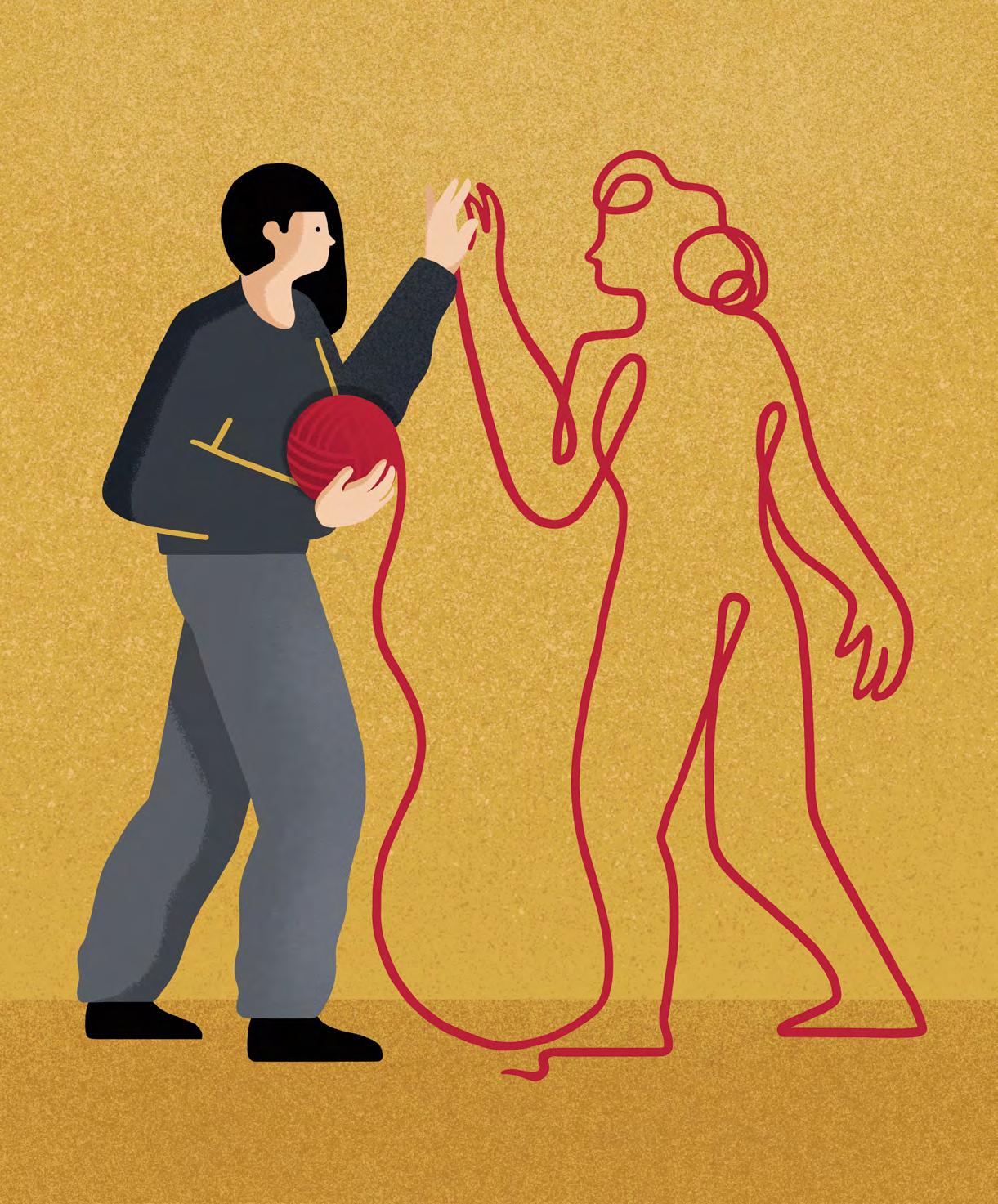
1. Stringed instrument with a deep tone (5)
7. Principal trombone of the Berlin Philharmonic, he performs in Joe Chindamo’s Ligeia, ... Ramsay (8)
8. Soloist for Elgar’s Cello Concerto, Germany’s ... Gerhardt (5)
10. Norwegian Tine Thing Helseth performs in ... Weinberg’s Trumpet Concerto (10)
12. The double bass and piano depict this trunked animal in Saint Saëns’ The Carnival of the Animals (8)
14. The Flight of the Bumblebee is an interlude in RimskyKorsakov’s The Tale of ... Saltan (4)
16. Benjamin Northey conducts Bernstein’s Symphonic Dances from ... Side Story (4)
17. Talented Melbourne Symphony Orchestra cellist though surfing novice, ... Wood (8)
20. Violinist directed by Erin Helyard in the Baroque Festival’s Bach and Vivaldi Concertos, Tair ... (10)
23. It’s time (5)
24. Roman XIX (8)
25. Essential part of the trombone (5)
1. The ravishing voice singing works from Vivaldi and Handel, Samantha ... (6)
2. Rich fertile soil (4)
3. Celtic twisted metal neck ring which might appear in Tristan und Isolde (4)
4. Vakhtang Kakhidze’s ballet Amazons includes a dance for such a faun-like creature of mythology (5)
5. On a wide scale (9)
6. Invitation acknowledgment (6)
9. Mozart’s A Little ... Music (5)
11. Appoints to new position (9)
13. Moai island, Rapa ... (3)
15. The page of music on the stand (5)
16. Stirring from sleep (6)
18. Once again! - like the return of Melbourne Symphony Orchestra Composer in Residence Katy Abbott’s work, The Peasant Prince (6)
19. Franz Liszt classic, The Mephisto ... (5)
21. Chopin’s Etude in F Minor is named The ... after these buzzing insects (4)
22. Face covering of the type shed by Salome in Strauss’ eponymous work (4)
Create
page 50
1 Gustav Mahler sets the words of this German philosopher, poet and critic in the 4th movement of his 3rd Symphony. What is his name?
2 Which MSO Life Member wrote Oscar-winning songs for a Disney animated film featuring incidental music by Hans Zimmer?
3 Elgar’s Cello Concerto became indelibly associated with the all-toobrief life and career of a celebrated British cellist, who was the wife of an equally famous pianist and conductor. What was her name?
4 There are two planets missing from Gustav Holst’s evergreen orchestral showpiece The Planets. Which ones?
5 New Zealand’s homegrown diva Dame Kiri te Kanawa sang this virtuosic Handel aria for soprano and trumpet from the oratorio Samson at the wedding of Prince Charles and the late Lady Diana Spencer in 1981. What are the opening words?
6 The Melbourne Symphony Orchestra’s 2024 season features a pair of works in the same genre by the husband and wife of a famous 19th century household, whose names start with R and C. What are their full names?
7 The revised version of Peter Sculthorpe’s Earth Cry features a prominent solo role for which ancient musical instrument?
8 David Lean’s classic romantic melodrama Brief Encounter (1945) uses musical material drawn from the second of four concerti for piano and orchestra written by which celebrated Russian virtuoso pianist?
9 We have already heard Melbourne Symphony Orchestra’s Chief Conductor Jaime Martín conduct stunning performances of the 5th, 6th and 9th symphonies of Czech 19th century master Antonin Dvořák with the MSO. What comes next in the cycle?

10 Cool, Somewhere and Tonight are songs from an award-winning Broadway musical composed by which celebrated composer and conductor? He conducted the Mahler 5th Symphony in Melbourne with the New York Philharmonic in the 1970s.
11 This jazz-flavoured tone-poem from the 1920s gave rise to a famous 1951 MGM musical starring Gene Kelly, Leslie Caron and pianist Oscar Levant. The title describes a “fishout-of-water” situation.
12 Who is the “hero” depicted in the Strauss tone-poem A Hero’s Life?
13 Notoriously self-critical, this Russian composer said of his 6th Symphony that it was the best thing he had yet composed.
14 One of the most popular of all concert overtures is this one to a relatively little-known Russian opera starting with the letter R. What is the full title of the opera?


memoir Mao’s Last Dancer, this work narrates with words and music the inspiring story of Li Cunxin’s childhood and follows his subsequent journey to become one of the world’s greatest ballet dancers.


DAY
OFF

“I value staying in – just relaxing, listening to music, having a chat with friends. It’s great having people in the neighbourhood where we can do that, and it can be quite impromptu.”
are important to me and being able to relax with them and spend quality time away from music-making is special. I think it makes me better at what I do when I have that time to relax.
WHEEL WORDS:

Thursday 2 May / 7.30pm
Robert Blackwood Hall, Monash
Friday 3 May / 7.30pm
Melbourne Town Hall
Saturday 4 May / 7.30pm
Frankston Arts Centre
La Mer and Ein Heldenleben
Thursday 9 May / 7.30pm
Saturday 11 May / 2pm
Arts Centre Melbourne, Hamer Hall
Thursday 27 June / 7.30pm
Saturday 29 June / 7.30pm
Arts Centre Melbourne, Hamer Hall
Friday 28 June / 7.30pm
Costa Hall, Geelong
RYMAN HEALTHCARE WINTER GALA CARMINA BURANA
Thursday 4 July / 7.30pm
Friday 5 July / 7.30pm
Saturday 6 July / 2pm
Arts Centre Melbourne, Hamer Hall
Thursday 18 July / 7.30pm
Friday 19 July / 11am
Saturday 20 July / 7.30pm
Arts Centre Melbourne, Hamer Hall
